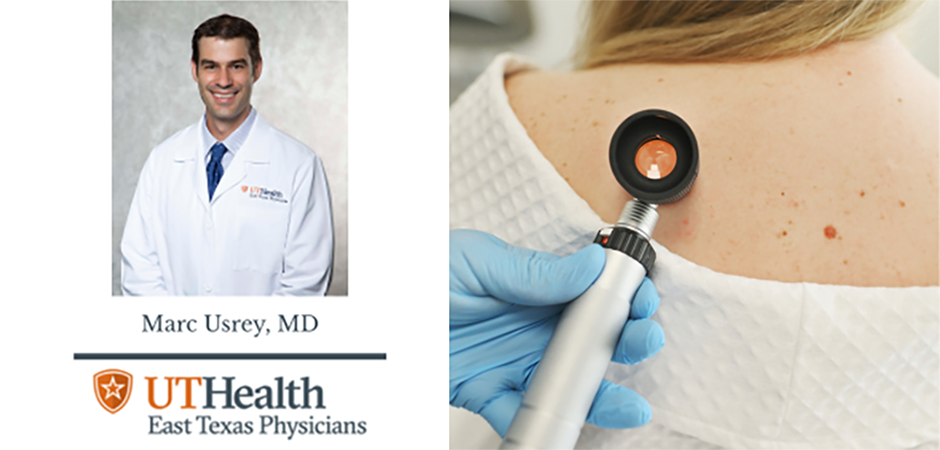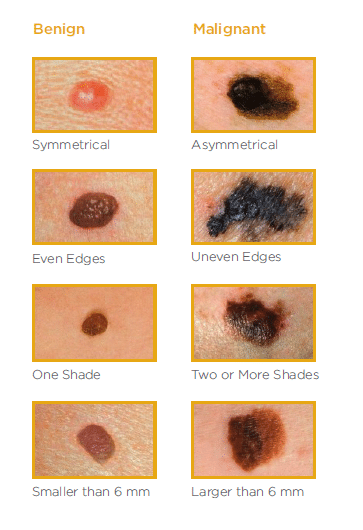
As the sun climbs higher every day over the East Texas plains, many will turn their attention to preventing one thing: skin cancer.
Since May is Melanoma and Skin Cancer Awareness Month, we asked Marc Usrey, MD, a hematology/oncology specialist at UT Health East Texas HOPE Cancer Center, to answer a few questions about skin cancer.
How common is skin cancer?
Skin cancer is the most common cancer in America, affecting nearly one in five people during their lifetime and was diagnosed more often than ALL OTHER cancers combined. At more than 5.4 million cases treated per year, by the time you finish reading this sentence, someone in the U.S. has been diagnosed with skin cancer. Thankfully, most skin cancers are highly treatable and are not life-threatening if caught early.
Melanoma is a less common type of skin cancer than squamous cell carcinoma or basal cell carcinoma, but it is far more serious and potentially life-threatening compared to other forms.
What causes skin cancer?
Several risk factors can increase your chances of developing skin cancer, including:
- Excessive exposure to sunlight or tanning beds. Tanning beds are classified as a Group 1 carcinogen, the same category as tobacco and asbestos. Using a tanning bed before age 35 increases your melanoma risk by 59%.
- History of intense sunburn. Just one blistering sunburn in childhood can double your lifetime risk of melanoma.
- Fair skin, light hair (blonde or red), and light-colored eyes.
- Family history of skin cancer.
- A weakened immune system, such as after organ transplantation or due to certain medical conditions.
Who Can Develop Skin Cancer?
Although people with fair skin, blonde or red hair, light-colored eyes and a history of sunburns or freckling are at the highest risk, skin cancer can develop in people of all skin colors.
Jamaican singer-songwriter Bob Marley died in 1981 from acral lentiginous melanoma, a rare but aggressive form of melanoma that often affects darker-skinned individuals. It typically appears on the palms, soles of the feet or under the nails.
Young adults should also be aware — melanoma is one of the top three cancers diagnosed in people aged 15 to 29.
What are the warning signs of skin cancer?
 Performing a monthly skin self-exam can help you spot changes early:
Performing a monthly skin self-exam can help you spot changes early:
- Use a mirror to check your entire body, including hard-to-see areas like the back, scalp, soles and nails.
- Look for anything new, changing or unusual — including new moles or changes to existing moles.
- Taking pictures can help you track changes over time.
- Discuss any concerns promptly with your doctor.
Remember the ABCDE warning signs:
- Asymmetry
- Border irregularity
- Color variation
- Diameter larger than a pencil eraser (>6mm)
- Evolving shape, size, or color
How can I prevent skin cancer?
Skin cancer can be prevented by protecting your skin from the sun's harmful ultraviolet (UV) rays. Use a broad-spectrum sunscreen with an SPF of 30 or higher, reapplying every two hours. Seek shade, especially during peak sun hours. Finally, as previously mentioned, avoid indoor tanning and perform regular skin self-exams.
If you have a suspicious mole or have questions about skin cancer, consult your primary care provider. If you need to find a PCP near you, visit our website at UTHealthEastTexasDoctors.com.
